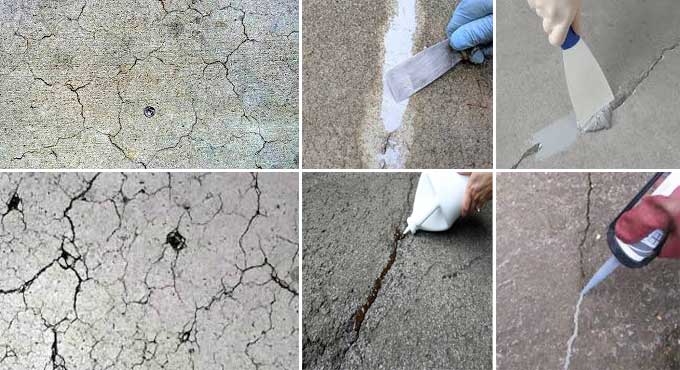NEWS | SOFTWARE | SHEET
Getting the most out of Concrete Crazing
A crazing occurs when the surface layer of concrete shrinks causing a network of random cracks. It resembles spider webs or shattered glass when crazing cracks appear on a surface.
Crazing cracks are likely to appear when concrete slabs lose moisture rapidly. The durability of concrete is not affected by cracking cracks because they don't affect structural integrity.
The crazing concrete is considered to have originated within a week after the concrete mixture has settled. These cracks will widen if left untreated, so it is essential to cure them as soon as possible. Two to three millimeters of depth are typical for the visible cracks.
Effects of Crazing Concrete
It is important to note that crazing concrete does not affect the durability or strength of the structure, but it does look bad since these cracks are sometimes extremely noticeable.
The cracks can grow into larger cracks if they are not cured for a longer period of time, which will cause moisture to seep deep into the structure, resulting in corrosion. Although crazing concrete may look undesirable and have dirt and dust trapped inside, it doesn't pose any extreme structural risks.
Plastic shrinkage cracks and drying shrinkage cracks are similar to craze cracks. As concrete is still plastic, it is prone to shrinkage cracks. As wetness at the surface level disappears as the cracks dry, they become deeper & wider.
The other one is shrinkage cracks caused by drying, which predominantly occur after concrete slabs harden. Concrete loss is primarily caused by the water loss in the mixture itself.
Main Causes of Crazing Concrete
Crazing concrete can be caused by a variety of factors. It is possible for concrete surfaces in contact with the formwork as well as those that are exposed to the atmosphere to develop cracking.
The primary cause is surface shrinkage, caused by any element such as the environment, physical element, or artificial element.
Too Much Cement Water Ratio
Crazing can also be caused by using surplus water. Concrete's surface is determined by the surplus water supplied to it and a thin layer of water forms on it.
As this surplus water evaporates, concrete's crazing characteristics are revealed. Concrete mix mixtures must have the appropriate amount of water when it comes to balancing the mix.
Dry Cement Use in Finishing
A lot of artisans sprinkle dry cement over concrete while it still contains moisture in order to obtain a better finish. This causes the concrete to dry up really fast and also leaves cracks on the surface.
Carbonation
In regions that are poorly ventilated, concrete reacts with carbon dioxide in the air or carbon monoxide emitted from machinery or vehicles. As soon as the concrete begins to settle down, cracks begin to appear due to shrinkage of the surface layer.
Untidy, congested, and poorly ventilated places are common regions for this chemical reaction to occur. Another reason may be that the mortar used in the construction is too rich or wet or that proper curing has not been accomplished.
A hunk of concrete that is rendered or plastered too soon after casting is prone to crazing. The problem is caused by using too fine sand.
Too Many Vibrations
The more vibrations applied while the concrete is falling down, the more cement slurry that ends up on top, dropping through the concrete and dropping metal and gravel at the bottom. Eventually, the cement at the top dries up, causing the concrete to crack.
A variety of modern concrete mixers can be set to a specific RPM to counteract the cause of concrete crazing. There are a lot of chances of crazing on the surface of concrete when it is manually set rather than electrically vibrated, but modern tools assist in avoiding this to a great extent.
To get more details, go through the following video tutorial.
Lecturer: Spray-Lock Concrete Protection
Curing Lacking
The evaporation of water from a concrete surface becomes rapid when it is allowed to dry with inadequate curing, since it is not provided with the correct amount of water. Concrete that is dried out soaks up more water during this phase. In turn, this causes the concrete surface to craze.
When concrete is laid in areas with low humidity, fast airflow, sun exposure, and non-uniform water spread across the surface, these situations usually occur.
Unskilled Labor
Manpower with poor skills is also a contributing factor to crazing concrete. It is sometimes possible to obtain cement to the surface by regular troweling actions designed to settle down the concrete quickly. The result of this smallish poor practice is water bleeding, which generates surface cracks. Manpower issues are usually caused by negligence on the part of the workers involved.
Concrete Crazing Treatment
- It is best to glaze the concrete surface regularly to prevent or decrease cracking over the concrete surface.
- The concrete slabs will have a monolithic impression if epoxy and silica sand is used over them. In addition to changing the appearance of the surface, this also improves its color. A resurfacing product can be used afterwards to terminate the additional surface.
- The polishing of the surface where cracks are visible can also be a very beneficial treatment. To clear cracks that are usually only 2 to 3 millimeters deep, polishing grinds the upper surface layer where the crazing pattern appears.
- It is also possible to apply curing monomolecular compounds to the surface, which controls the rapid evaporation of moisture from the concrete and aids in preventing it from cracking. It is also possible to fill those tiny cracks with grout if you aren't familiar with crazing.


